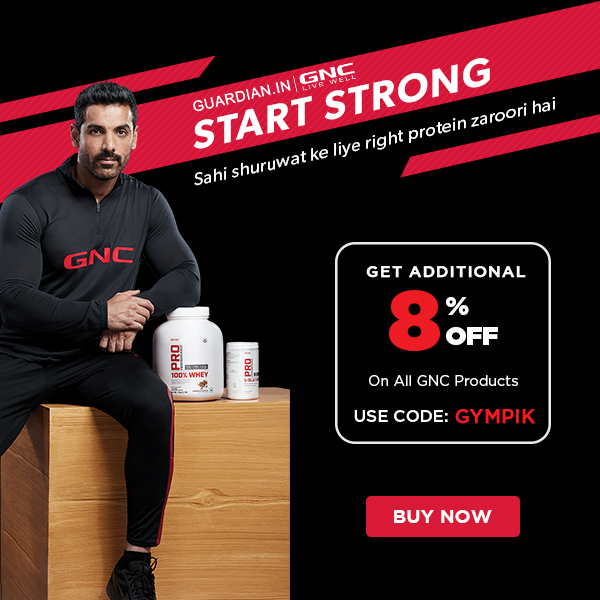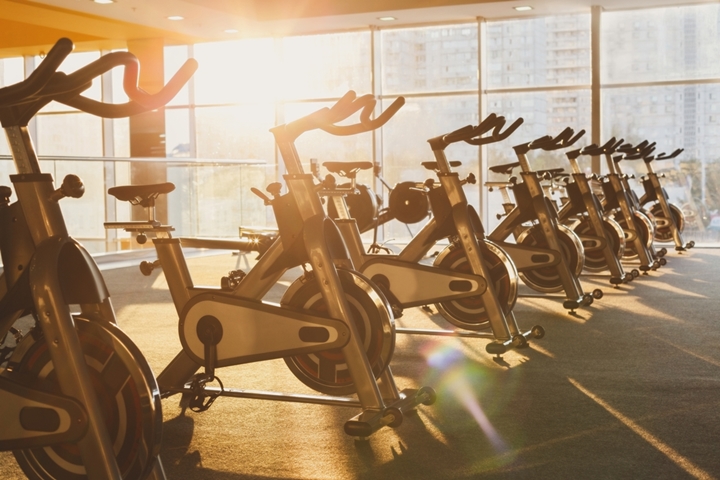
High-Intensity Interval Training (HIIT) is a more intense form of interval training which involves alternate periods of quick, short bursts of anaerobic exercises followed by recovery periods of low- intensity aerobics. The trainee usually starts with warm- up exercises, followed by repetitive sets of high- intensity workouts, each separated by periods of low to moderate intensity, and finally ending with a cooling period of very low density. An HIIT session may last 5 – 30 minutes, depending on the type of exercise. The number of repetitions and the length of each also vary and may be as little as three repetitions with 20seconds of intense exercise.
Continuous Endurance Training involves aerobic exercising at a steady pace. Exercising at a lower intensity increases the duration of the workout and, hence, improves the capacity for endurance. The intensity and duration again depend on the type of exercise. For instance, a jogger and ultra distance runner running at 50 – 60% of maximum heart rate, or 20 – 36% of maximal oxygen consumption (VO2 Max), can run for 60minutes at an easy pace; whereas a marathon runner running at 70 – 80% maximum heart rate, or 52 – 68% VO2 Max, at a faster pace, can endure for 30 – 45minutes.
Intensity vs. Continuity #1:
Cardiovascular Benefits

Research shows that 4 repetitions of 4minute run at 90 – 95% maximum heart rate, each followed by a 3minute recovery period at 70% maximum heart rate performed 3 days per week for a duration of 8 weeks resulted in 10% greater improvement in stroke volume (the amount of blood pumped per beat) than did long, slow training for the same duration of time.
When cardiovascular functions improve, VO2 Max also increases. Between people who participate in an 8week HIIT and those who do in 8week continuous endurance training, the VO2 Max was found to increase higher in those in the HIIT program (15%) than the ones in the continuous endurance program (9%).
Intensity vs. Continuity #2:
Skeletal- Muscular Benefits
Initially, scientists believed the increase in mitochondria (energy factor of a cell) density to have come only from continuous endurance exercise. However, research findings show a similar increase in mitochondrial density in people who performed four to six 30second HIIT 3 days per week, and those who performed 45 – 60 minutes of steady workout at 65% VO2 5 days per week. The former group with the higher levels of mitochondrial enzymes are benefited with improved skeletal- muscle metabolic function.
Intensity vs. Continuity #3:
Metabolic Benefits
The increase in mitochondrial density is also seen as a metabolic adaptation. Fat oxidation is significantly higher and carbohydrate oxidation is significantly lower after 6 weeks of interval training.
Excess Post- exercise Oxygen Consumption (EPOC) is another metabolic benefit of HIIT. Oxygen consumption remains elevated as the working muscles restore physiological and metabolic factors in the cells to pre- exercise levels. As compared to endurance training, there is higher and longer calorie burning after exercise.

At The Crossroad
Improving cardiovascular, skeletal- muscular and metabolic functions of the body are the main goals of aerobic exercises and, for years, continuous endurance training has been the chosen method to achieve these goals. But people are now realizing that HIIT leads to similar, and sometimes better even, results in less time. Those looking to achieve physiological gains faster are beginning to develop a new- found craze for HIIT. It is especially popular with athletes because research has shown that it boosts athletic performance and improves the health of recreational athletes. Besides, it provides the same benefits of continuous aerobics, but in less time.
However, unless you’re a pro athlete, trainer or coach, or have a competitive spirit, you will find it difficult to keep up with the physical demands of HIIT. You may even risk an injury which does not happen in slow and steady cardio workouts. The ideal approach would be to create a balance by incorporating both HIIT and Continuous Endurance Training into your workout schedule. Of course, depending on your workout, you might not need both. Choosing the right path is crucial and it is not that simple a thing to do; which is why you need the counsel of fitness experts whose services you’ll find readily available through Gympik.com.


 Traqade
Traqade
































Playing at Golden Crown has been a fantastic addition to my online gaming routine in Australia. The live casino section offers an authentic experience with real dealers and interactive gameplay. I love the variety of live games available, which add an extra layer of excitement to my sessions. The bonuses and promotions are also very generous, providing great value for my money. If you’re interested in live gaming and want a premium casino experience in Australia, this site is the way to go.
I’ve been searching for a reliable casino in Canada, and Grey Rock Casino exceeded my expectations. Their promotions are generous, and I’ve loved taking advantage of their free spins offers. The game variety is impressive, and there’s always something new to try. It’s quickly become one of my favorite online destinations for gaming.
This blog was… how do you say it? Relevant!!
Finally I have found something which helped me. Many thanks!
https://carakeshagrawal.com/
Mommy is the authority, and she’s demonstrating it nowadays by expressing us how to do it in the
bedroom! In our Hot Baby Porn film category, watch out for some sexy MILF pornstars and
amateur women. By the time we’ve finished with you, you’ll remain begging for Mommy because this XXX library has taken the Oedipus diverse
to a whole new level. Did you finish your tasks
still? This series is full of Mommy sing and thirsty Stepmoms. http://www.brainlanguage-sa.com/setcookie.php?lang=en&file=https%3A%2F%2Fsk.tags.world%2Fkosice%2Findex.php%3Fpage%3Duser%26action%3Dpub_profile%26id%3D611923
Thanks in support of sharing such a good idea, paragraph is nice, thats why i have read it completely
https://shakiba-enayati.com/
I think this is one of the most vital information for me.
And i’m glad reading your article. But should remark on few general things, The site style is wonderful, the articles is really great :
D. Good job, cheers
Excellent write-up. I certainly appreciate this site. Continue the good work!
Excellent items from you, man. I have take note your stuff previous to and you
are just extremely magnificent. I really like what you have received right
here, certainly like what you’re stating and the best
way wherein you say it. You’re making it entertaining
and you continue to care for to stay it sensible. I can’t wait to read far more from
you. That is really a tremendous website.
We stumbled over here from a different web address and thought I might check things out.
I like what I see so now i am following you.
Look forward to finding out about your web page repeatedly.
Professional home inspection services in Calgary Licensed inspectors, detailed reports, and same day
availability
hello everyone, I’m glad to find such a good and useful link. I promise to give it to my friends
the site with the best performance of all time, easily Maxwin and always provides
When someone writes an post he/she retains the plan of a user in his/her mind that how a user can be aware of it.
Therefore that’s why this piece of writing is outstdanding.
Thanks!
https://poolstoday.net/
I do not know if it’s just me or if everybody else encountering problems with your blog.
It appears as if some of the text in your content are running off the screen. Can someone else
please comment and let me know if this is happening to them as well?
This could be a issue with my web browser because I’ve had this happen previously.
Thanks
https://cirugiadehernias.com/